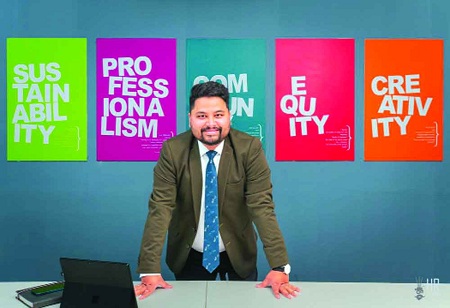Ayush Atul Mishra, CEO and Co-Founder, Tattvan E-Clinics.

India is home to 1.4 billion people, of who close to two-thirds reside in rural areas. For a lot of residents of these areas, meeting basic health needs is still a challenge, not to mention treating rare diseases. Therefore, the government of India's goal of making healthcare accessible to all will require extraordinary planning, policies, and a helping hand from technology. It cannot be overstated how technology aided us during the COVID-19 pandemic. It not only helped the country navigate through the storm but also acted as a catalyst that gave birth to telemedicine. Thanks to its rapid recognition and adaptation, consultations, diagnosis, and treating patients remotely have become a reality. As a result, telemedicine in India is poised to reshape India's healthcare landscape in the upcoming years.
Reimagining health
In a bid to form a robust healthcare infrastructure, India needs to bridge the lacuna of healthcare providers, and this cannot be addressed with a linear approach. For the majority of its rural population, healthcare in India has always raised significant questions about accessibility and affordability. The number of people who require medical and social care keeps on increasing as the population grows older. Therefore, unless we make significant strides to address it now with bold measures in policy, investments, and technology, this problem is poised to take on enormous proportions in the coming years. This is where we require an apt solution that would cater to these challenges.
Enter telemedicine
Telemedicine has rapidly expanded and changed over the last few years to keep up with the increasingly high standards of healthcare.This has been possible with the involvement of tech-enabled companies, which have brought telemedicine to remote areas of the nation, and the government, which has welcomed it with open arms.
According to the Economic Survey 2023, 9.3 crore patients have already used the national telemedicine service e-Sanjeevani, which sees over 4 lakh patients each day. The paradigm shift towards this cutting-edge technology has already set an example of how technology can help save millions of lives in the nation.
Bridging the gap
India is an ideal location for telemedicine owing to its diverse topography, vast population, and challenging medical needs. As a developing nation, we are experiencing population growth and economic expansion, but rising healthcare costs still pose a significant challenge. In this regard, telemedicine offers a way to close the gap between the resources on hand and the expanding demands on the healthcare system. It provides a chance for primary and secondary healthcare systems to work effectively together and reach populations living in underserved areas. In the next two years, telemedicine is likely to become a norm in the remotest areas of the nation. The doctors would be accessible to patients residing in these areas and would be able to test, diagnose, and check histories and symptoms efficiently. The patient will be able to use a wearable cuff to measure their blood pressure, blood oxygen levels, heart rate, and more and share it right away with the doctor. The medicine will be prescribed, and the patient will receive it at their nearest pharmacy. Furthermore, patients will be able to connect with different specialists, including neurologists, cardiologists, psychologists, and more. By eradicating the requirement of travelling long distances, both patients and doctors will save time and money which will aid in forming a robust healthcare system.
Towards a healthy future
A growing health-conscious population, encouraging government initiatives, and favourable economic conditions are expected to create lucrative opportunities for segmental expansion over the coming years, significantly boosting the telemedicine market. It has already started to connect the dots in the health system while successfully bridging the gap between the patient and the doctor to function with a singular vision of better public healthcare. As a result, demand for remote patient monitoring will surge. This will further lead to improved patient outcomes and compliance rates. Overall, the growth of telemedicine in India will experience elevated growth in the coming years. According to a report by Insights10, the Indian telemedicine market had a value of $1.10 billion in 2022 and is anticipated to grow at a CAGR of 21.2% to reach $5.15 billion by 2030.